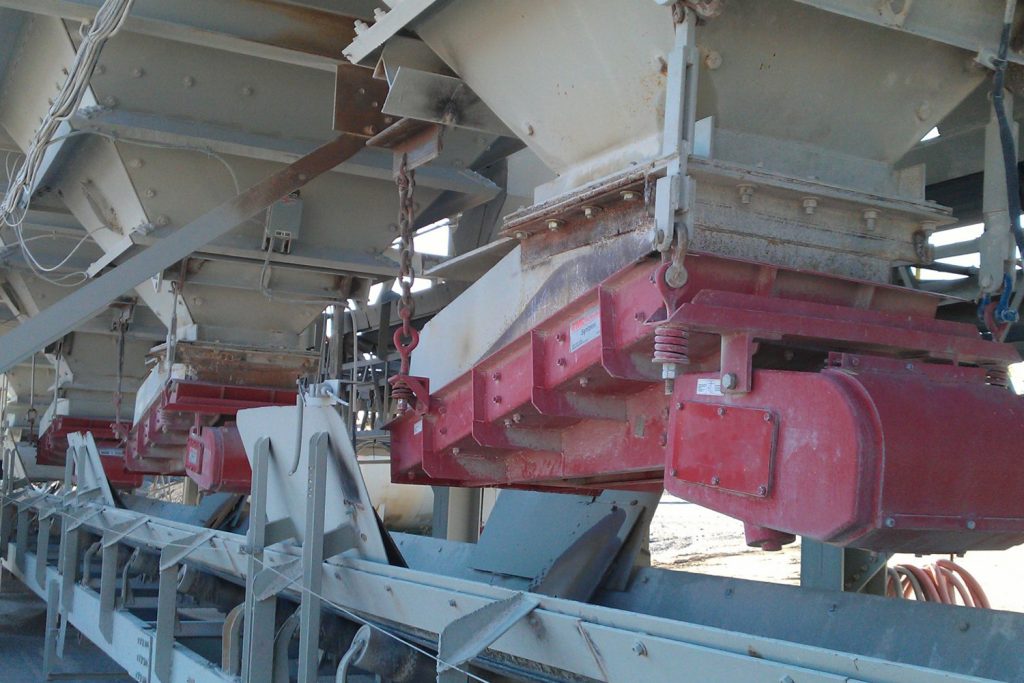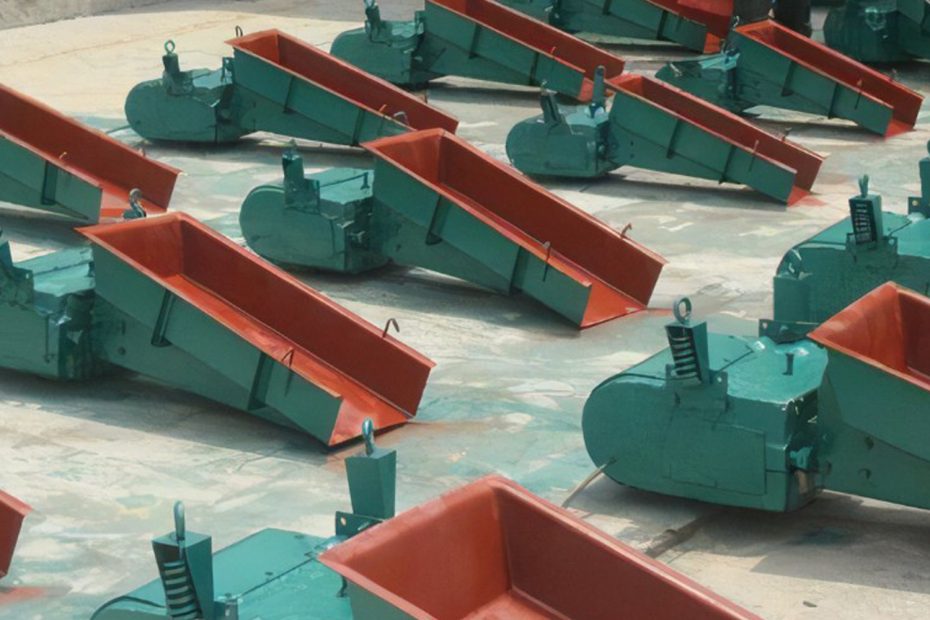An electromagnetic vibrating feeder uses an electromagnetic exciter to drive the feed trough to vibrate reciprocally at a set inclination, allowing material to move steadily along the trough.
The vibrating feeder generates vibration through its electromagnetic exciter. After power supply activation, the electromagnet and coil create an exciting force that initiates vibration.
Next, shock absorbers damp part of this force and transmit the remaining energy through the armature, connecting fork, and other components to the feed trough.
As a result, the entire feeder produces forward and backward reciprocating and throwing motions, enabling continuous and self-regulated material feeding.
Role of The Control System In Electromagnetic Vibrating Feeder
The control system plays a critical role in regulating, optimizing, and safeguarding electromagnetic vibrating feeder operation during continuous material handling.
- Controller — The controller acts as the central processing unit, receiving signals and issuing commands to regulate feeder performance.
- Power Supply — The power supply delivers stable voltage and current to the electromagnetic coil, ensuring consistent magnetic excitation.
- Frequency Controller — The frequency controller adjusts excitation frequency to control vibration intensity and operational stability.
- Amplitude Controller — The amplitude controller regulates coil current, allowing precise control of vibration strength and feeding rate.
- Feedback Sensors — Sensors monitor vibration amplitude, material flow rate, and power consumption, enabling real-time adjustments for optimal performance.
- Safety Interlocks — Safety interlocks detect overloads, overheating, or blockages and trigger protective actions, including emergency shutdowns.

Control method of electromagnetic vibrating feeder
In practice, controlling an electromagnetic vibrating feeder means adjusting its output capacity and feeding performance according to material and process requirements.
Control Method and Function of an Electromagnetic Vibrating Feeder
Amplitude Adjustment of the Electromagnetic Vibrating Feeder
The vibration amplitude directly determines the intensity of the force acting on conveyed materials and strongly influences material movement behavior.
Because materials differ in particle size, density, and flowability, operators adjust amplitude to control discharge rate and material layer thickness.
Higher amplitudes generate stronger vibrations, which help convey larger material volumes or overcome flow resistance in difficult materials.
Typically, operators achieve amplitude adjustment by changing the electromagnetic excitation force, since vibration amplitude remains proportional to excitation intensity.
Working Point Adjustment of the Electromagnetic Vibrating Feeder
Most electromagnetic vibrating feeders operate near resonance, where small frequency changes can produce significant amplitude variations.
Therefore, adjusting the working point allows operators to fine-tune feeding performance with minimal energy consumption.Working point adjustment involves coordinating voltage, frequency, and amplitude to match specific material handling requirements.
- Voltage Adjustment:The supplied voltage determines magnetic field strength and directly affects vibration amplitude. Increasing voltage raises amplitude, while reducing voltage lowers it.
- Frequency Adjustment:Some feeders include frequency controllers that modify excitation frequency. Changing frequency alters vibration speed and intensity, helping optimize feeding efficiency.
- Amplitude Adjustment :Operators control amplitude by regulating coil current. Higher amplitude increases material flow, while lower amplitude improves precision and prevents material segregation.
Conclusion
In summary, the electromagnetic vibrating feeder i control system integrates electrical, mechanical, and feedback components to achieve precise control, stable operation, and safe, efficient material conveying.
